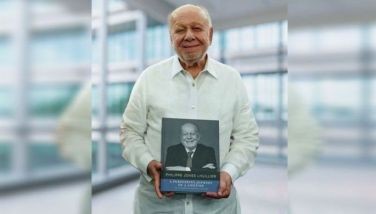A politically wrong Leyte geography
Every newscast aired by national television channels features weather stories. Invariably, the Philippine map is shown in these reports to make them panoramic, vividly graphic and easily comprehensible to ordinary viewers like me.
While watching such TV news in the port terminal of Hilongos, Leyte, the other night (shortly before the earthquake rocked most parts of our country), and when the Philippine map was shown, I mentally and quickly compared it with another map that was posted on the wall below the television set. I did not consciously do the comparison for anything more than to check my recollection of our geography. But after gazing longer and more intently at the province of Leyte in the map, I realized a political aberration. This was the definition of the territory of Leyte to include certain towns whose idiosyncrasies differ from those of the people in the capital city.
Early that morning, I had a conversation with a former elected provincial official. Let us identify him as Atty. Emmanuel Golo. Years ago, he orchestrated a move that, without his knowledge, earned the ire of the ruling political families in the district. Atty. Golo dreamed of having some west Leyte towns, separated from the mother province and annexed to the province of Southern Leyte. These towns are Inopocan, Hindang, Hilongos, Bato and Matalom.
He claimed to share all good and valid reasons with the people in this district although he took less effort to emphasize three. First, these towns are far removed from Tacloban City, the capital of Leyte. To demonstrate, one captain of an upland Matalom barangay saw Atty. Golo to accompany the latter to Tacloban City. He left his barrio at dawn to be able to join the lawyer who planned on leaving before sunrise. Their trip took them to the capital city after three hours of road travel. Luck did not smile upon them. The official they wanted to see was out of the office. They waited but decided to leave when the late afternoon clock rang without the official having come back to his office. When they finally reached home in Matalom, it was past dinner time, making the captain exclaim “all days effort for nothing” or in Visayan words to that effect.
If Matalom town were to become a part of Southern Leyte, the village chief could reach Maasin City, in twenty minutes and be back home just as fast. Any government transaction municipal and barangay officials have with provincial officers can be attended to in the Southern Leyte capital easier and faster than in distant Tacloban City.
Second. Even mercantile transactions and professional engagements are done by people of these towns in nearby Maasin City and not in far Tacloban City. In fact, if these businessmen of this western part of Leyte cannot find their trade items or professional services in Maasin City, they prefer to come to Cebu City than go to Tacloban City.
Third. The dialect spoken in Southern Leyte, described mischievously as Kanahan(?), is similar to the tongue of the natives of the towns of Matalom, Bato, Hilongos, Hinday and Inopacan. They all sound distinctly like Boholanos, as they say “aho” and “gajud”. This must be distinguished from the Waray of Leyte. Truth to tell, the Kanahan people hardly understand pure Waray as if they are worlds apart.
While a provincial board member, Atty. Golo tried to understand the sentiment of the Kanahan. In many a survey, he watched out for tell tale signs of their deeper longings. According to him, he was swept by an irresistible desire of these people to be a part of Southern Leyte, for more than just those reasons cited above. In rapid succession, he got hold of resolutions from barangay councils and sangguniang bayans pleading for such redefinition of the two provinces in such a manner that these local government units become part of Southern Leyte.
Alas, the ruling class who would be most affected by the move, did not want to give in to the desires of these people. That virtual secession would definitely erode their political base. So, rather than endorse those resolutions with a bill aimed at accomplishing that direction, they filed a legislative measure designed to nip in the bud the realignment efforts. Or so, Atty. Golo discovered.
Today, even if the Leyte map does not the reveal this deep-seated aberration, it exists. Who knows, this political imperfection maybe corrected by the result of a more responsive 2013 elections.
- Latest
- Trending






























